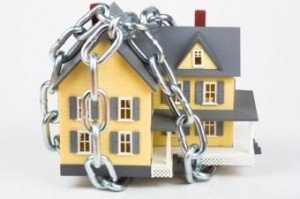 After half a decade from the bottom of the housing bust, the U.S. homeownership rate still remains stuck at a current 50-year low. According to a recent report from Zillow, some attribute the low homeownership rate to more Americans delaying major life decisions that typically precede buying a home, like getting married and starting families. Still others blame rising rents and home values for making it difficult to save enough to buy a home. Zillow’s report takes a look at the demographics of those Americans that do own homes today, and those that do not, and compares the data to that of past decades.
After half a decade from the bottom of the housing bust, the U.S. homeownership rate still remains stuck at a current 50-year low. According to a recent report from Zillow, some attribute the low homeownership rate to more Americans delaying major life decisions that typically precede buying a home, like getting married and starting families. Still others blame rising rents and home values for making it difficult to save enough to buy a home. Zillow’s report takes a look at the demographics of those Americans that do own homes today, and those that do not, and compares the data to that of past decades.
Age for Homeownership:
Zillow reports that as the adult population ages longer, so do renters and homeowners. Renters in the United States in particular have steadily gotten older, and this could suggest that more Americans who turned to renting when first starting out are staying renters longer, either because of financial constraints or simply lifestyle choices that preclude the need to own a home.
For typical age of a homeowner, however, Zillow reports that it stayed constant around 50 or 51 right up until the peak of the housing bubble in 2006, when the age of a typical homeowner started rising rapidly. The report shows that throughout the housing bust and subsequent recovery, those Americans that have been the most successful in buying or holding onto a home have largely been older.
Zillow does note though, that at roughly the same time in 2005-2006, a notable drop in the homeownership rate among 25-to-44-year-olds began to take hold, which has continued into today. It is likely the younger members of this age group, just entering early adulthood, were naturally inclined to rent while their older peers, may have entered the housing market in the early years of the housing boom only to fall into foreclosure in later years and turn to renting as the housing bubble burst.
Because this age group has been renting homes in greater numbers over the past decade, Zillow states that they have subjected themselves to both rising rents and rising home values that makes achieving homeownership more difficult. Rent values never really fell during the recession and instead have kept climbing steadily higher for years. Because of this increase in money spent on rent, less money is saved for a down payment on a future home purchase.
Additionally, Zillow says this this speaks nothing to the fact that many previously foreclosed-upon homeowners are legally prohibited from purchasing a home for up to seven years after foreclosure, even if they could afford to buy another home today. This potentially locks them out of the market for years to come.
Racial and Ethnic Composition in Homeownership:
Despite the fact that the homeowner population has aged, the report notes that the population’s racial and ethnic composition has not changed much. According to Zillow, there is a striking gap in homeownership between whites and other races and ethnicities. The research shows that the gap is largest for blacks and Hispanics, who traditionally have had the lowest homeownership rates.
While members of all racial and ethnic groups have struggled to some extent to regain a foothold in the housing market after the recession, the homeownership rate for both groups is lower today than in 2006, but the Hispanic homeownership rate is higher than it was two decades ago while the current black homeownership rate is slightly lower.
Zillow states that evolving demographics can be useful in illustrating and explaining some of the changes seen in homeownership in the decade since the housing bust began. Younger adults and minorities have statistically been more inclined to rent instead of own, but it remains unclear if this is due to the fact that they prefer renting or they can’t attain homeownership. Additionally, Zillow says that while some individuals were able to break out of the rental market and buy a home during the bubble, many were subsequently foreclosed upon, and in turn, forced to re-enter the rental market.

 DSNews The homepage of the servicing industry
DSNews The homepage of the servicing industry










